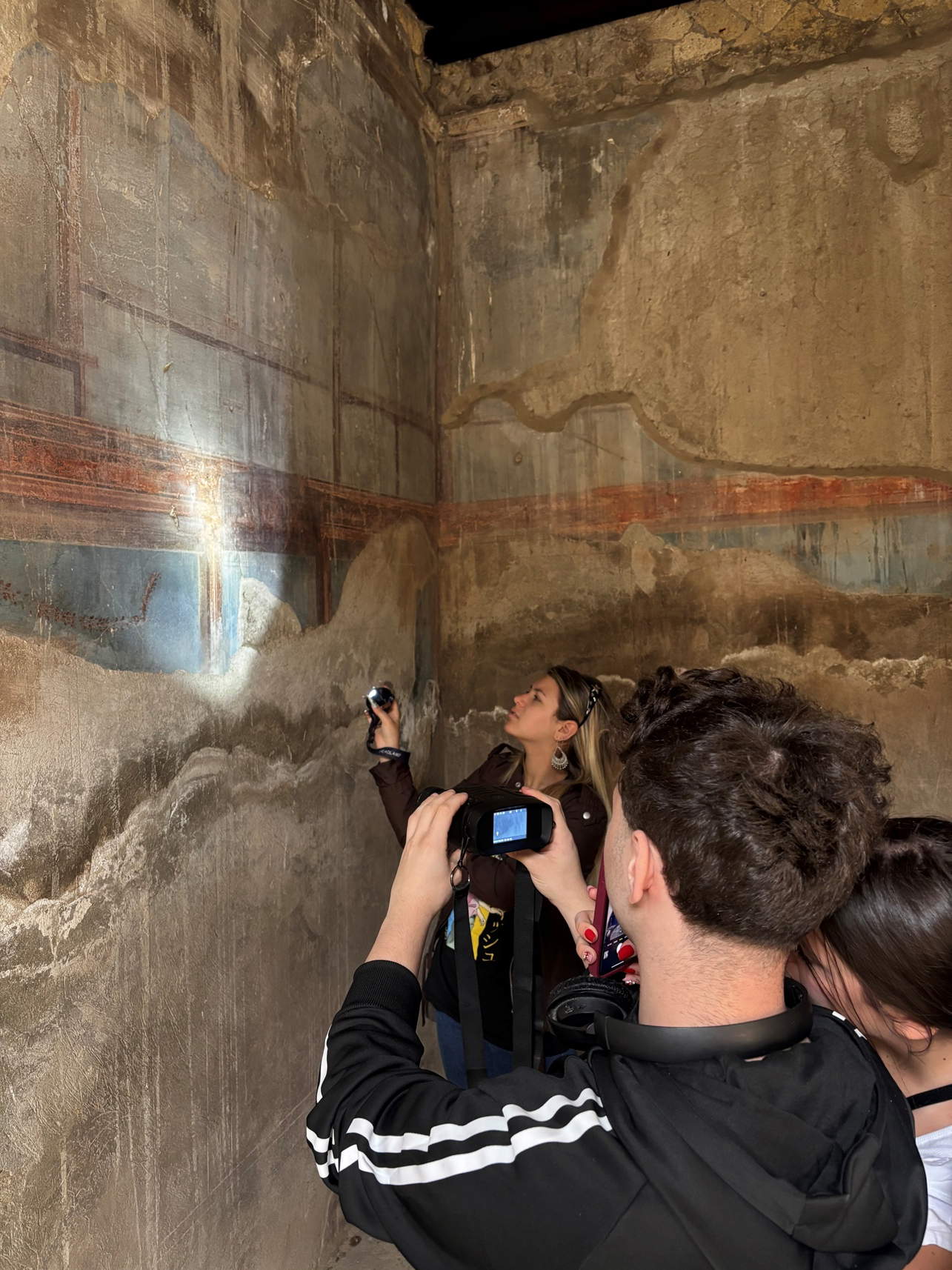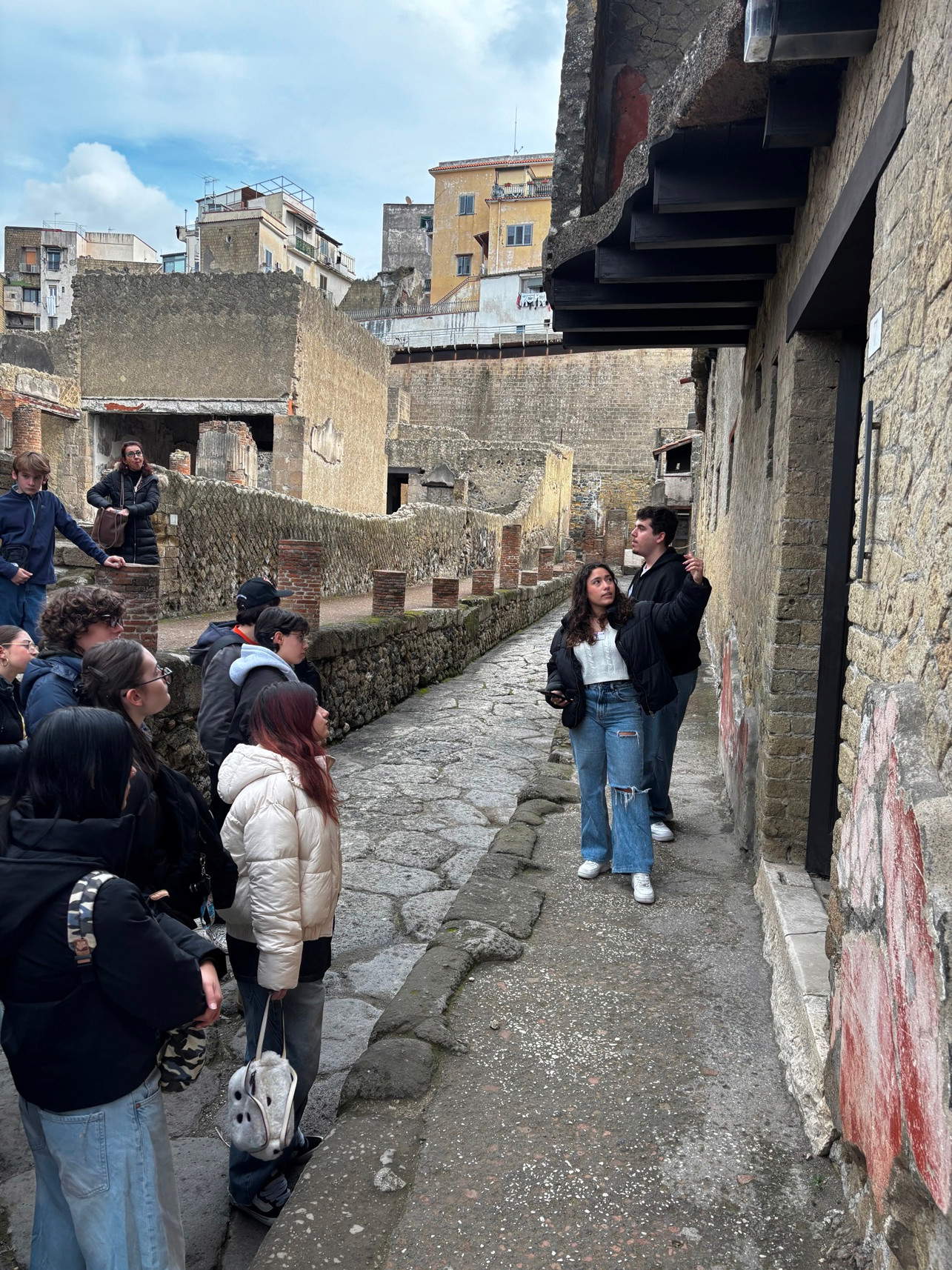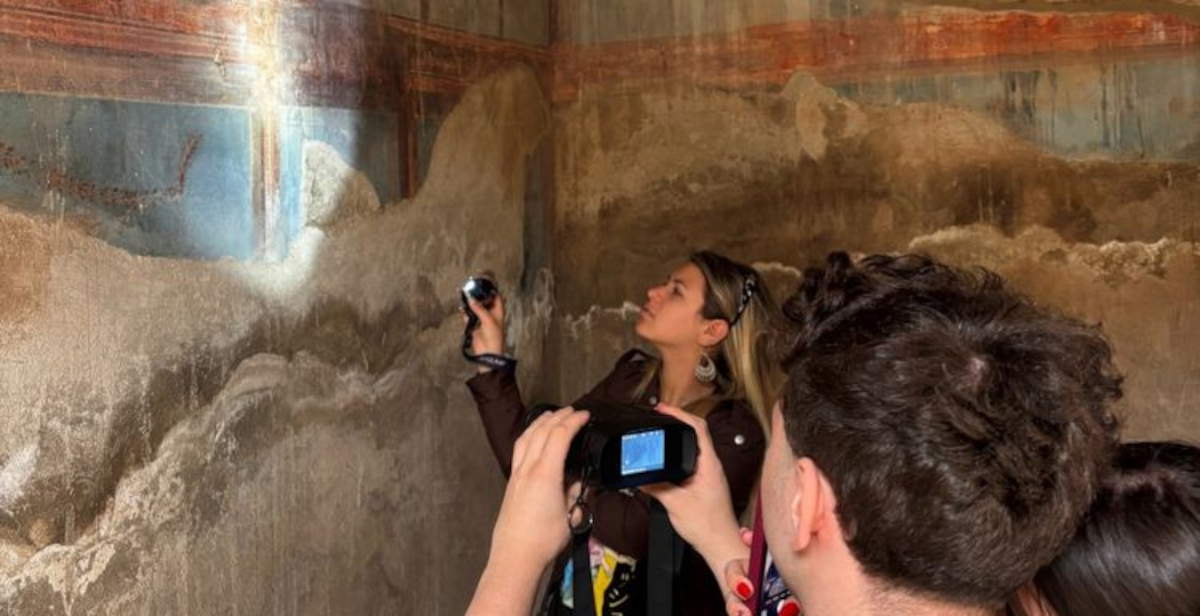From comic strips in Latin to weaving inspired by Roman mosaics, from 3D reliefs to multilingual installations: the Herculaneum Archaeological Park was transformed into a veritable laboratory for cultural experimentation thanks to the Percorsi per le Competenze Trasversali e l’Orientamento (PCTO) ( Pathways for Transversal Skills and Orientation ), which involved 667 students from six local institutions from February 3 to May 13, 2025. Through activities distributed among the Park, Villa Campolieto, the Palace of Portici and school workshops, students had the opportunity to live an integrated educational experience, rooted in the territory and oriented toward the future. The goal of the project was to foster direct contact with the archaeological heritage, stimulating in the participants a deeper awareness of the historical and cultural value of the site.
“The PCTO project is a concrete opportunity to transmit the value of cultural heritage to the new generations,” commented Francesco Sirano, delegated officer in charge of park management. “I am impressed by the quality and imagination of the contributions, which with intelligence and passion give new life to a millennia-old heritage.”

The educational approach was structured starting with a visit to the Park, designed to provide a solid and stimulating cognitive base. This experience was then grafted onto a diversified workshop course, calibrated to the specificities of the different school addresses. Students were thus able to apply technical, artistic, linguistic and scientific skills to concrete projects capable of restoring new vitality to the heritage of ancient Herculaneum. Eleven training paths were activated, with two main activities serving as a common thread. The first was the tourist reception module, which saw students engaged in telling visitors about the site’s iconic sites, from the Central Baths to the House of the Deer, conducting guided tours in Italian and several foreign languages. The second was the monitoring of tourist flows, carried out through data collection, interviews and direct observations, with the aim of analyzing visitor behavior and improving the services offered by the archaeological site.

The value of the project was particularly evident in the final productions. Istituto De Bottis and Istituto Nitti produced multilingual promotional videos, telling the story of ancient Herculaneum in Italian, English, French and Spanish, with an engaging narrative style that combined images, emotions and historical knowledge. Scotellaro students produced textiles with hand looms, inspired by the colors of the Roman era: Pompeian red, cobalt blue, lava black. Nitti’s art department, on the other hand, created a terracotta model of the boat found in the 1980s, now preserved in the Boat Pavilion, faithfully reproducing the proportions of the original.

One of the most original projects was the comic strip Quid edebant Herculanenses?, conceived and written entirely in Latin by De Bottis students. The work imagines a dialogue between two citizens of ancient Herculaneum, Lucius and Flavia, sitting at a table between reconstructed dishes and historical accounts. The project demonstrated how a seemingly distant language can be returned to contemporary times through the creative use of visual and narrative languages. The students’ contribution was not limited to the artistic and communicative dimension. Pantaleo, with the Construction address, developed architectural surveys and a three-dimensional model of the workshop of the House of Neptune and Amphitrite. The Chemistry address of the same institute conducted archaeobotany activities, cataloging species in the gardens of the Park and visiting the exhibition From Egg to Apples, focusing on the diet of the Roman world. Computer Science students, on the other hand, mapped the site’s wi-fi network, analyzing its coverage and suggesting solutions to optimize it, thus also contributing to the Park’s technological improvement. The project was able to combine scientific rigor and creativity, manual skills and new technologies, providing students with a concrete opportunity for orientation and experimentation.
 |
| Herculaneum Archaeological Park involved 667 students in PCTO pathways: here's what they did |
Warning: the translation into English of the original Italian article was created using automatic tools. We undertake to review all articles, but we do not guarantee the total absence of inaccuracies in the translation due to the program. You can find the original by clicking on the ITA button. If you find any mistake,please contact us.